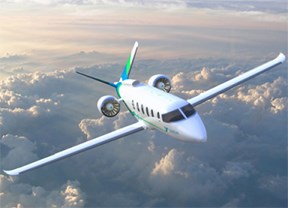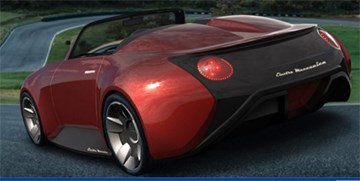Much is discussed about the efficiency and low operating cost advantages that electric vehicles enjoy over their gasoline counterparts. One factor rarely discussed, however, is their reliability in comparison to fossil fuel-powered machines.
The typical internal combustion automobile engine has more than 750 moving parts driven by an ongoing series of explosions in heavy metal cylinders. Power is transferred to a transmission with another roughly 500 moving parts to the drive shaft, with 80 percent of the fuel's energy lost in friction and heat. Typically gas internal combustion engines today last up to 200,000 miles (320,000 kilometers).
These limitations are more obvious in aircraft where you can't just pull over and wait for a tow truck if your engine dies. Not only does the typical fossil fuel aircraft require regular maintenance and tune-ups, but the time between rebuilds is also around 2,000 hours to maintain a Certificate of Airworthiness. Turbine engines in turboprop and jet aircraft are more robust with the time between overhauls being 20,000 to 100,000 hours depending on make and model.
I asked Jerry Kroll, CEO of Vancouver-based electric vehicle company Electra Meccanica, which manufactures the Solo and Tofino electric vehicles, about the life span of an electric motor compared to an internal combustion engine. Kroll, who is also a licensed pilot and racecar driver, pointed out that Tesla just recently completed an endurance test of the Model 3 electric motor.
"After running for the equivalent of one million miles (1.6 million kilometers) the motor and gears still looked new," he says.
"Compare the thousands of moving parts in an ICE and transmission versus just one moving part in an electric motor. A gas motor is exploding while an electric motor is spinning. It just makes common sense that the latter will be safer, more reliable, cheaper to operate and last longer."
Today an increasing number of aviation manufacturers, including such heavyweights as Airbus, Siemens, Raytheon, Rolls Royce, and Boeing, are developing electric powered aircraft due to their many advantages. European company Pipistrel has been selling its Alpha Electro two-seat electric trainer in both Europe and the U.S. With a flight time of one hour plus 45-minute reserve, it is perfect for flight training and costs less than $5 per hour in electricity versus $70+ per hour for a gas powered trainer.
The Zunum Aero hybrid electric 12-person commuter aircraft built with backing from Boeing and JetBlue Airways will be delivered as early as 2022, according to Aviation Week magazine.

Wright Electric is aiming to create a battery-powered commercial airliner for distances of under 300 miles and U.K. budget carrier EasyJet announced it was developing an electric 180 seat aircraft scheduled for 2027.
Although no endurance data exists on electric jet motor lifespans, it could be a million hours or longer based on the Tesla tests. The important takeaway is that electric motors don't experience catastrophic motor failures, and aircraft are safer, more reliable, quieter and far cheaper to operate.
But in the meantime, the many advantages of electric transport are here today with new models recently released. Ranges, once limited to 120 kilometers per charge are now 300 kilometers or more with vehicles such as the new Hyundia Kona EV (415 kms), Kia Nero and Soul EVs (385 and 370 kms), and Nissan Leaf Plus (360 kms), according to Consumer Reports. Even the least expensive Tesla Model 3 short-range travels more than 350 kilometers between charges.
In addition, half a dozen light trucks and SUVs are coming by 2021. Even GM and Ford have announced new all-electric pickups based on their best-selling Chevy Silverado and Ford F-150 brands.
It's no longer a question of whether electric mass transport is real but how quickly it will become ubiquitous.
Matt Blackman is the founder of the Squamish Alternative Energy Group.



